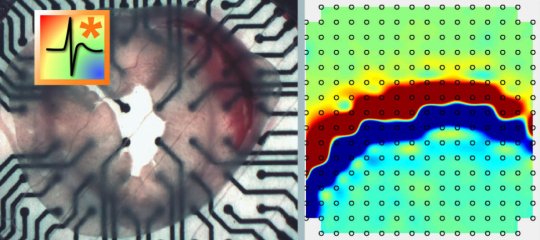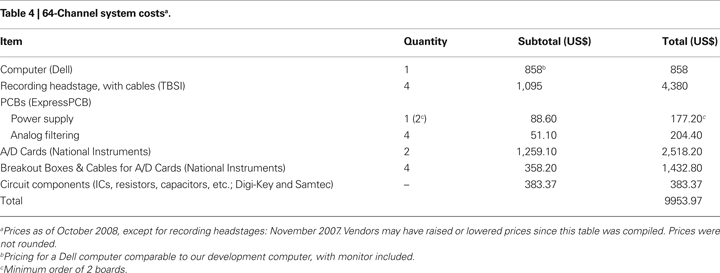- Multi Channel Systems Mcs Driver Login
- Multi Channel Systems Mcs Driver Download
- Multi Channel Systems Mcs Drivers
- Multi Channel Systems Mcs Driver Portal
Multi Channel Systems GmbH 533 Follower auf LinkedIn Focused in the development of precise scientific measuring instrumentation in the field of electrophysiology Multi Channel Systems, a division of Harvard Bioscience, Inc., focuses on the development of precision scientific measuring instrumentation and equipment in the field of electrophysiology for research groups at universities. Multi Channel Systems GmbH 521 Follower auf LinkedIn Focused in the development of precise scientific measuring instrumentation in the field of electrophysiology Multi Channel Systems, a division of Harvard Bioscience, Inc., focuses on the development of precision scientific measuring instrumentation and equipment in the field of electrophysiology for research groups at universities. MCS-64 is a multi-channel solution for static and dynamic weighing processes which require communication with industrial bus systems. The basic weighing module is the LDM 88.1 which has 4 digital inputs (DI) and digital outputs (DO). For bus connections, gateways such as Profibus, CANbus and Ethernet are available. The gateway can communicate. The new MCStimulus II version 2.2 makes changes of stimulus intensities, which are part of the scientist's daily's work, as easy and fast as turning a knob, while still giving the user the flexibility of programming complex pulse protocols on up to 8 separate output channels in parallel.
Product Range everything from high resolution to high throughput
With the MEA2100-System, the CMOS-MEA5000-System and the Multiwell-MEA-System, Multi Channel Systems covers the complete range from basic research over high resolution electrophysiology to high throughput screening. Featuring an unmatched sampling rate of up to 50 kHz per channel, all MCS hardware ensures the highest and most accurate data quality.

With the MEA2100-System, the CMOS-MEA5000-System and the Multiwell-MEA-System, Multi Channel Systems covers the complete range from basic research over high resolution electrophysiology to high throughput screening. Featuring an unmatched sampling rate of up to 50 kHz per channel, all MCS hardware ensures the highest and most accurate data quality.
For more detailed information on the systems, please go the MCS website.
The highest quality microelectrode arrays
MCS provides the widest variety of high-quality, low-impedance microelectrode arrays. From 32 to 252 electrodes, as well as CMOS-Chips with 4225 electrodes and multiwell plates with up to 96-wells: Get them all from MCS.
'>Reliable hardware with a high level of integration
MCS is well-known for reliable, powerful, and compact hardware. In most systems, amplification, data acquisition, and stimulation are integrated in one device. This makes it a simple addition to your laboratory, because it easily fits on your microscope or lab bench.
Reusability due to stable electrode material
Given that the electrodes on the MEAs are made of the stable material Titanium Nitride, they can be reused several times. Cleaning is easy (instructions are provided in the manual) and the MEAs can be autoclaved for sterilization and plasma-cleaned for better cell-adhesion.


Powerful and flexible software
All MCS-Systems come with corresponding software. Updates are available for free anytime from our website. MCS software is always easy-to-use, providing an intuitive graphical user interface. Most software packages consist of two tools: one for data acquisition and online analysis and another for offline data analysis. All programs can be installed on an unlimited number of computers.
PreviousNext-->A relatively inexpensive solution for a home-theater system is to connect a set of surround-sound speakers to an audio adapter on a computer that is running the Windows operating system. Alternately, the user can connect an external audio/video (A/V) receiver between the adapter outputs and the speakers. In response to the popularity of home-theater systems, 5.1- and 7.1-channel audio content that has been authored for these systems is becoming increasingly available.
To accurately render multichannel audio content on a home-theater system requires an audio-format descriptor that can assign speaker positions to audio channels in multichannel streams. As discussed previously, the WAVEFORMATEXTENSIBLE structure can specify such speaker assignments.
To help provide audio driver support for home-theater systems, Microsoft has defined a new 7.1-channel speaker configuration for Microsoft Windows XP and later. This configuration is supported in Windows Vista, Windows XP with Service Pack 2 (SP2), and Windows Server 2003 with Service Pack 1 (SP1). It is not supported in Windows Server 2003 with no service packs installed, Windows XP with Service Pack 1, or Windows XP with no service packs installed.
The new 7.1-channel speaker configuration is shown in the following figure, which is taken from the Windows multimedia control panel (Mmsys.cpl) in Windows XP with SP2.
The Windows multimedia control panel assigns the name '7.1 home theater speakers' to the new 7.1-channel wide speaker configuration shown in the preceding figure.
The following figure shows the older 7.1-channel configuration, which is supported in Windows 2000 and later and in Windows Me/98.
Multi Channel Systems Mcs Driver Login
In Windows XP with SP2, the multimedia control panel assigns the name '7.1 wide configuration speakers' to the older configuration shown in the preceding figure.

Multi Channel Systems Mcs Driver Download
In Windows XP with SP2, you can find the two configurations shown in the two preceding figures by following these steps:
In Control Panel (Category View), click Sounds, Speech, and Audio Devices.
In the Sounds, Speech, and Audio Devices pane, under Pick a task, click Adjust the system volume.
In the Sounds and Audio Devices Properties property sheet, on the Volume tab, under Speaker settings, click Advanced.
In the Advanced Audio Properties property sheet, under Speaker setup, open the drop-down list and select one of the two 7.1 speaker configurations.
The configuration shown in the 7.1 Wide Configuration Speakers figure is the Sony Dynamic Digital Sound (SDDS) configuration, which was introduced in 1993 for use in motion picture theaters. However, few, if any, home-theater systems use this configuration. Instead, 8-speaker home-theater systems are likely to use the new 7.1 configuration shown in the 7.1 Home Theater Speakers figure. In addition, minimal home theater content has been authored for the SDDS configuration, and users can expect most of the available 7.1-channel content to be formatted for the new 7.1 configuration.
Although the new '7.1 home theaters speakers' configuration largely supplants the old '7.1 wide configuration speakers' configuration, Windows will continue to support the old configuration, to provide backward compatibility.
In Windows 2000 and later and in Windows Me/98, the 5.1-channel speaker configuration assigns channels 5 and 6 to the back-left and back-right speakers, respectively. In Windows Vista, Windows Server 2003 with SP1, and Windows XP with SP2, the 5.1-channel configuration remains unchanged. In contrast to the 7.1-channel configuration, these Windows versions do not define a new 5.1 format descriptor to distinguish the 5.1 side-speaker configuration from the 5.1 back-speaker configuration. Because the two configurations are so similar, defining two 5.1 configurations might have caused confusion among users regarding which configuration to use and whether to play content authored for one configuration on the other configuration. When positioning the speakers in a 6-speaker home-theater system, users tend not to distinguish between side and back speaker positions. Instead, speaker positioning is more likely to be determined by the shape of the room and the placement of the furniture in the room.
Multi Channel Systems Mcs Drivers
The 5.1-channel surround-sound speaker configuration is shown in the following figure, which is taken from the Windows multimedia control panel in Windows XP with SP2.
Multi Channel Systems Mcs Driver Portal
The Windows multimedia control panel assigns the name '5.1 surround sound speakers' to the 5.1-channel speaker configuration shown in the preceding figure.
Although the differences between the 5.1-channel side-speaker and back-speaker configurations might be transparent to users, they are not transparent to audio hardware vendors. As mentioned previously, 5.1-channel content is typically authored for side speakers rather than for back speakers. Thus, when playing 5.1-channel content through the '7.1 home theater speakers' configuration, the vendor should ensure that the two side-speaker channels in the 5.1-channel stream play through the side speakers rather than the back speakers. Similarly, when playing content authored for the '7.1 home theater speakers' configuration through a 5.1 speaker configuration with side speakers, the channels for the 7.1 side speakers most naturally map to the side speakers in the 5.1 configuration. For an audio device with stream-processing capabilities, another alternative is for the device to attempt to preserve the content in channels 4 and 5 by mixing them with channels 6 and 7 before playing them through the side speakers in the 5.1 configuration.
This section includes:
